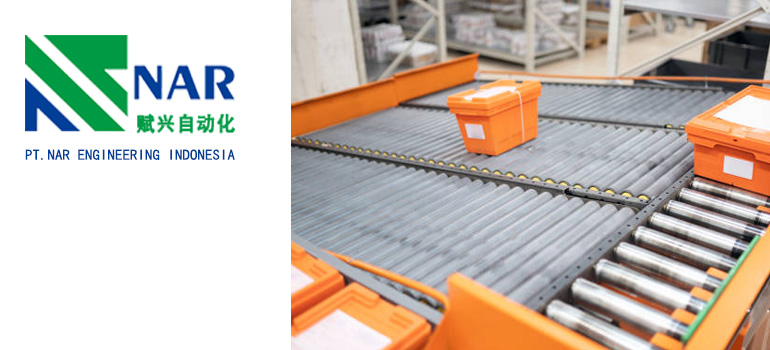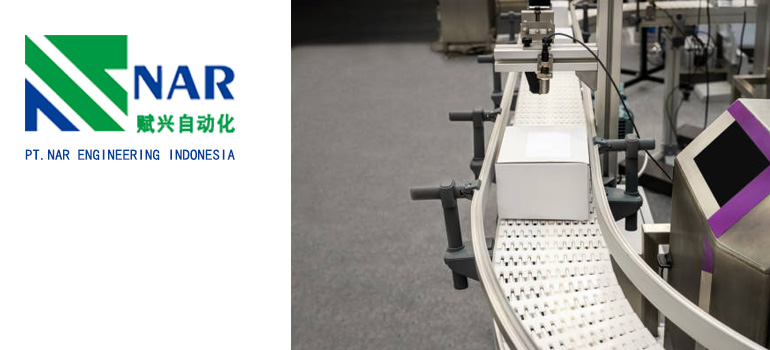Summary:
5 Key Factors to Consider When Choosing a Telescoping Conveyor
Conveyor Capacity and Size Requirements
Durability and Material Quality
Automation and Control Feature
Space Efficiency and Design Flexibility
Cost and Maintenance Considerations
Conveyor Capacity and Size Requirements
Evaluating Load Capacity for Telescoping Conveyors
When selecting a telescoping conveyor, the load capacity is one of the most crucial factors to consider. It’s essential to determine the maximum weight that the conveyor can handle to ensure it meets your operational needs. Overloading a conveyor can lead to premature wear and potential breakdowns, so it’s vital to match the conveyor’s capacity with the heaviest items you’ll be transporting. Review the specifications provided by the manufacturer and consider conducting a stress test to ensure the conveyor can handle your typical load without issues.
Determining Length and Extension Needs
Telescoping conveyors are prized for their ability to extend and retract, which makes them incredibly versatile in various settings. However, to maximize their effectiveness, you need to carefully evaluate the length and extension capabilities required for your specific application. Consider factors such as the distance between loading and unloading areas, as well as the conveyor’s ability to adjust its length based on different needs. Properly assessing these requirements will help you choose a conveyor that can seamlessly fit into your existing workflow and adapt to changing demands.
Impact of Conveyor Size on Workflow Efficiency
The size of a telescoping conveyor significantly impacts overall workflow efficiency. A conveyor that’s too short might not reach all necessary areas, while one that’s too long could take up valuable floor space or be harder to maneuver. When choosing the size of your conveyor, think about how it will integrate with your existing equipment and layout. Ensure that the conveyor’s dimensions allow for smooth operation without obstructing other processes. An appropriately sized conveyor will help streamline operations, reduce bottlenecks, and enhance productivity.
Durability and Material Quality

Key Materials Used in Telescoping Conveyor Construction
When evaluating a telescoping conveyor, the materials used in its construction play a critical role in determining its durability and overall performance. Common materials include stainless steel, aluminum, and high-strength polymers. Stainless steel is renowned for its resistance to corrosion and is ideal for environments where hygiene and durability are paramount, such as food processing facilities. Aluminum, while lighter and more cost-effective, offers good strength and is suitable for lighter loads and less harsh environments. High-strength polymers are often used for specific components where weight reduction and resistance to abrasion are crucial. Understanding these materials and their properties will help you choose a conveyor that meets both your operational demands and environmental conditions.
Comparing Durability of Different Telescoping Conveyor Models
Not all telescoping conveyors are built the same, and their durability can vary significantly based on the model and manufacturer. It’s important to compare the durability of different models by reviewing their design features, construction quality, and user reviews. Look for conveyors with reinforced frames, robust bearings, and heavy-duty belts, as these features generally indicate a higher level of durability. Additionally, checking for certifications or compliance with industry standards can give you added assurance of the conveyor’s longevity. Investing in a well-built, durable conveyor can reduce the frequency of replacements and maintenance, ultimately saving you money in the long run.
How Material Quality Affects Conveyor Longevity
The quality of materials used in a telescoping conveyor directly impacts its lifespan and performance. High-quality materials contribute to a conveyor’s ability to withstand the rigors of daily use and resist wear and tear over time. For instance, conveyors made from premium-grade metals or reinforced with advanced composites tend to last longer and require less frequent maintenance. On the other hand, lower-quality materials might lead to more frequent repairs and replacements, impacting your overall operational efficiency. When selecting a conveyor, consider not only the initial cost but also the potential long-term costs associated with material quality. Investing in higher-quality materials may involve a higher upfront cost but can result in greater durability and reduced maintenance needs.
Automation and Control Features
Essential Automation Options for Telescoping Conveyors
In today’s fast-paced industrial environments, automation is a key driver of efficiency and productivity. When selecting a telescoping conveyor, it’s important to consider the automation options available. Essential features to look for include automatic extension and retraction controls, which can help streamline operations and reduce manual intervention. Conveyor systems with programmable settings allow you to adjust the conveyor’s length and speed based on specific tasks or loads, enhancing flexibility and efficiency. Additionally, integration with automated sorting or packaging systems can further optimize your workflow by enabling seamless coordination between different stages of production.
Integration with Existing Control Systems
A major advantage of modern telescoping conveyors is their ability to integrate with existing control systems. This integration allows for a more cohesive operation across your facility. Ensure that the conveyor you choose is compatible with your current automation infrastructure, such as PLCs (Programmable Logic Controllers) or SCADA (Supervisory Control and Data Acquisition) systems. This compatibility facilitates smooth communication between the conveyor and other automated equipment, enabling real-time adjustments and coordinated control. Look for conveyors that support standard communication protocols like Ethernet/IP or Profibus, as these can simplify integration and enhance overall system efficiency.
Benefits of Advanced Control Features in Telescoping Conveyors
Advanced control features can significantly enhance the performance and versatility of a telescoping conveyor. Features such as touch-screen interfaces, remote monitoring, and diagnostics provide operators with greater control and visibility over the conveyor’s operation. Touch-screen panels allow for easy adjustments and real-time monitoring, while remote monitoring capabilities enable you to oversee conveyor performance from anywhere. Diagnostic tools can help identify issues before they become major problems, reducing downtime and maintenance costs. By investing in these advanced control features, you can improve operational efficiency, reduce manual errors, and extend the life of your conveyor system.
Space Efficiency and Design Flexibility
Space-Saving Benefits of Telescoping Conveyors
One of the standout features of telescoping conveyors is their ability to save valuable floor space. These conveyors are designed to extend and retract, making them ideal for environments where space is at a premium. When retracted, they occupy a minimal footprint, which is particularly useful in tight or congested areas. This space-saving characteristic allows you to maximize the use of your facility’s floor area for other essential operations or equipment. In contrast, traditional conveyors often require fixed installations that can limit your layout options and consume more space. By incorporating telescoping conveyors, you can achieve a more flexible and efficient workspace layout, enhancing overall operational efficiency.
Configurations and Design Options for Various Layouts
Telescoping conveyors offer a high degree of design flexibility, which allows them to be customized to fit various layouts and applications. They can be configured in different ways to accommodate specific operational needs, such as loading docks, packaging lines, or assembly areas. For instance, some models can be adjusted to different angles or heights, providing versatility in how they interact with other equipment and processes. Additionally, conveyors can be equipped with features like adjustable side rails or different belt types to suit various types of products. This flexibility in design ensures that the conveyor can be seamlessly integrated into your existing setup, optimizing your workflow and enhancing productivity.
Adapting Telescoping Conveyors to Different Work Environments
The adaptability of telescoping conveyors makes them suitable for a wide range of work environments. Whether you’re dealing with a high-volume distribution center, a manufacturing plant, or a small workshop, these conveyors can be tailored to meet your specific requirements. For example, in environments with fluctuating product sizes or changing production rates, telescoping conveyors can be adjusted to handle different load types and volumes. Additionally, they can be modified with various accessories or attachments to address particular challenges, such as handling fragile items or working in harsh conditions. This adaptability ensures that the conveyor remains effective and efficient as your operational needs evolve.
Cost and Maintenance Considerations
Initial Cost vs. Long-Term Value of Telescoping Conveyors
When evaluating telescoping conveyors, it’s important to weigh the initial cost against the long-term value they provide. While the upfront investment in a high-quality telescoping conveyor may be higher, it often leads to greater durability and fewer maintenance issues, which can result in significant cost savings over time. Consider the conveyor’s expected lifespan, its efficiency improvements, and the potential reduction in labor costs. A well-built conveyor might come with a higher price tag but could offer enhanced performance and reliability, making it a more cost-effective choice in the long run. It’s crucial to assess the total cost of ownership rather than just the initial purchase price to make a well-informed decision.
Common Maintenance Needs and Costs
Regular maintenance is essential to keep your telescoping conveyor operating smoothly and to extend its lifespan. Common maintenance tasks include inspecting and replacing belts, checking alignment and tension, lubricating moving parts, and cleaning the conveyor to prevent debris buildup. It’s important to follow the manufacturer’s maintenance schedule and guidelines to avoid unexpected breakdowns and costly repairs. Additionally, consider the availability and cost of replacement parts, as well as the ease of servicing the conveyor. Choosing a model with accessible components and a good support network can help minimize downtime and reduce maintenance costs.
How to Budget for Maintenance and Repairs
Effective budgeting for maintenance and repairs is key to managing the total cost of owning a telescoping conveyor. Start by estimating the frequency and cost of routine maintenance tasks, such as belt replacements and lubrication. Factor in potential repair costs for common issues and set aside a contingency fund for unexpected problems. Investing in a comprehensive maintenance plan or service contract can provide additional peace of mind and help manage costs more predictably. Regularly reviewing and updating your maintenance budget based on the conveyor’s performance and any changes in operational demands will ensure that you are prepared for both routine and unforeseen expenses.

